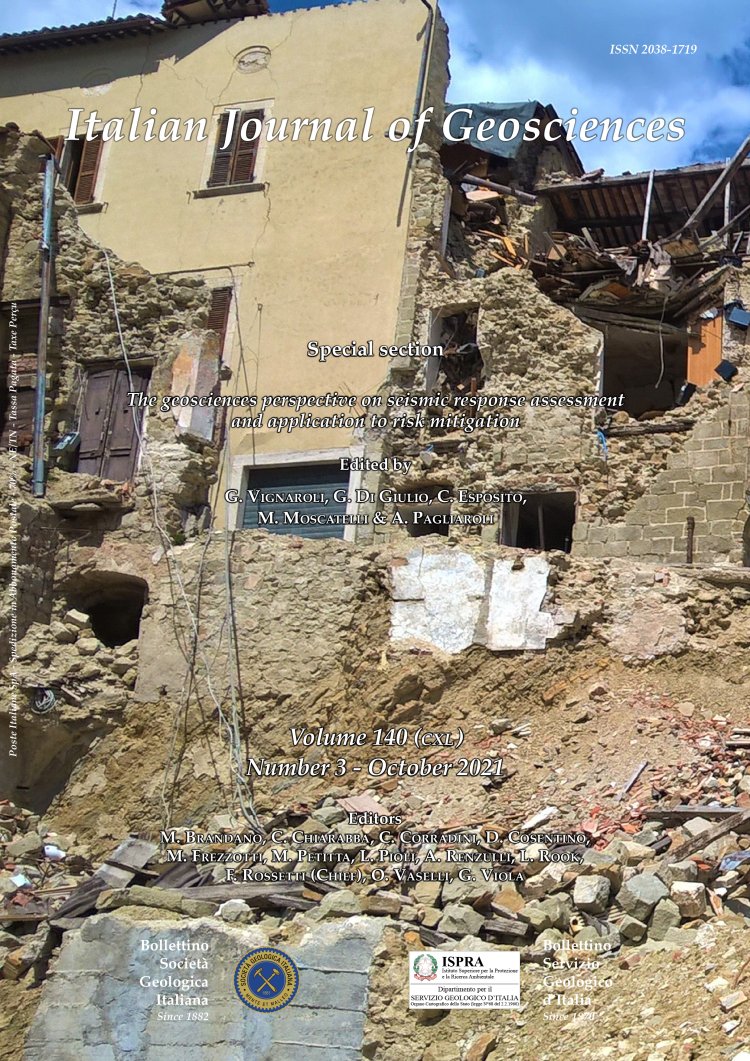
Refining the middle-late Pleistocene chronology of marine terraces and uplift history in a sector of the Apulian foreland (southern Italy) by applying a synchronous correlation technique and amino acid racemization to Patella spp. and Thetystrombus latus
Vincenzo De Santis (1), Giovanni Scardino (1), Marco Meschis (2), José E. Ortiz (3), Yolanda Sánchez-Palencia (3) & Massimo Caldara (1)
(1) Dipartimento di Scienze della Terra e Geoambientali, Univer- sità degli Studi di Bari “Aldo Moro”, Via Orabona 4, 70125 Bari, Italy.
(2) Dipartimento di Fisica e Astronomia, Università di Bologna, Via Carlo Berti Pichat, 8, 40127, Bologna (Italy).
(3) Biomolecular Stratigraphy Laboratory, Madrid School of Mines, C/Rios Rosas 21, E-28003 Madrid, Spain. Corresponding author e-mail: vincenzo.desantis@uniba.it
Volume: 140 (2021) f.3
Pages: 438-463
Abstract
For the first time, the synchronous correlation technique and amino acid racemization (AAR) analyses of Patella spp. and Thetystrombus latus shells are applied to an understudied sequence of raised palaeoshorelines to refine the knowledge about terrace phases and uplift history in the middle-late Pleistocene in a sector of the Apulian foreland (western coast of the Salento Peninsula, southern Italy). These combined methodologies provide the first chronological attribution for middle-late Pleistocene palaeoshorelines and quantitative assessment of vertical crustal movements in this sector of the Apulian foreland, which, to date, has been characterised by a scarcity of reliable chronological data.
By applying a synchronous correlation technique driven by new AAR analyses, we iterate different uplift rate scenarios to find the best match between digital terrain model and field-based observed palaeoshorelines and “expected” sea level highstand elevations.
Our results show that two uplift rate scenarios could explain the mapped geomorphology: (i) scenario 1 suggests fluctuating uplift rates over time with an uplift rate of 0.15 mm/y until 130 ky BP (middle Pleistocene, interval MIS 15 - MIS 6; that is, 590 - 130 ky BP) and of 0.07 mm/y from 130 ky BP to the present; on the other hand, (ii) scenario 2 suggests a constant uplift rate of 0.12 mm/y over time in the middle-late Pleistocene.
The palaeoshorelines recognised in this study are related to the following highstands: 119 ky BP (MIS 5.5 second peak), 125 ky BP (MIS 5.5), 240 ky BP (MIS 7.5), 340 ky BP (MIS 9.3), and 478 ky BP (MIS 13.1) for both scenarios 1 and 2. The two scenarios only differ in the oldest palaeoshoreline: 560 ky BP (MIS 15.3) in scenario 1 and 550 ky BP (MIS 15.1) in scenario 2.
Our results highlight how the number of preserved palaeoshorelines is controlled by uplift rates; indeed, in this area, we show that fewer palaeoshorelines are preserved than in regions where higher uplift rates have beeninferred, suggesting a more prominent effect of the “overprinting” or re-occupation of younger sea level highstands over the older sea level highstands. Finally, we discuss geomorphological and geological implications of using a synchronous correlation approach, driven by new age controls, to model raised palaeoshorelines where relatively low uplift rates have been mapped within well-known geodynamically stable regions, such as the Apulian foreland, southern Italy.
Keywords
synchronous correlation technique, amino acid racemization on Patella spp. and Thetystrombus latus, terrace phases, Apulian foreland, overprinting and re- occupation.
Get Full Text